This image is from the canyon in which route 168 ascends the Inyo Range from Big Pine, California. View is to the south/southwest.
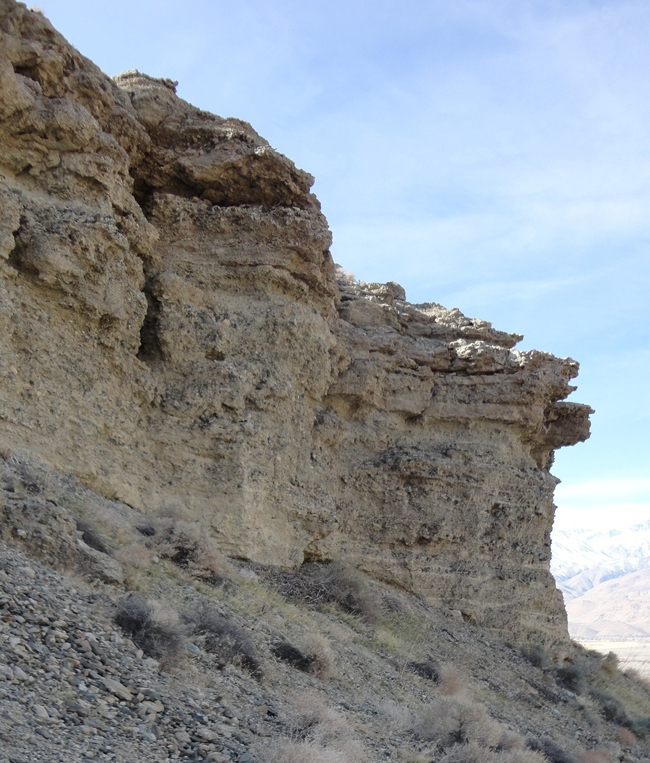
Those are gravel layers that dip gently westward. I think they’re associated with the underlying Waucobi Lake Beds, which are Plio-Pleistocene in age.

The lake beds are made of finer stuff, but I think these gravels could be alluvial fan/delta complexes that prograded out into the lake. They’re pretty finely stratified, considering the coarseness of the sediment.
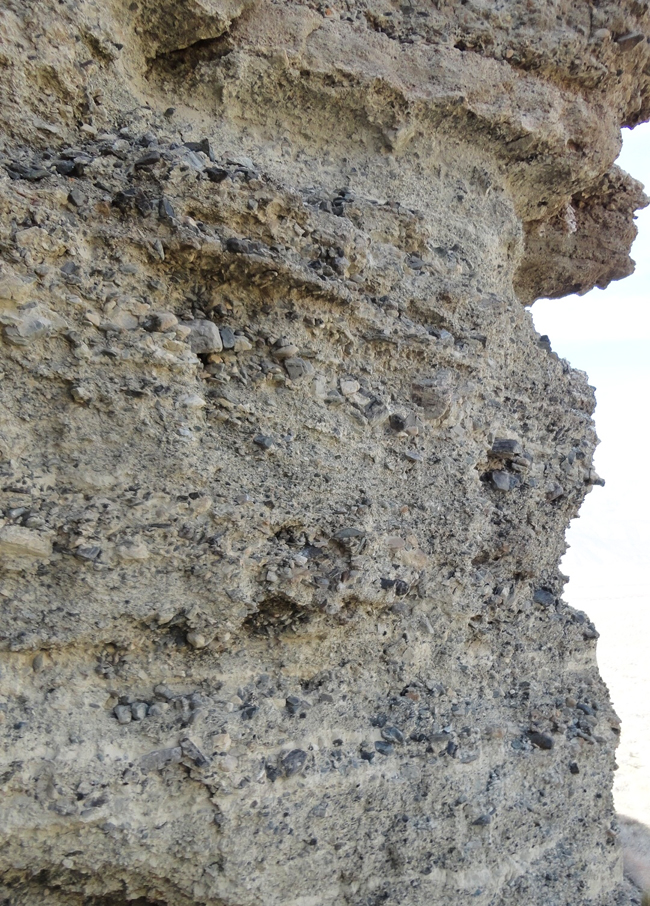
In places, you can see that the currents were clearly directed from east to west (from the Inyos into the Owens Valley), as indicated by paleocurrent signatures like these imbricated cobbles:
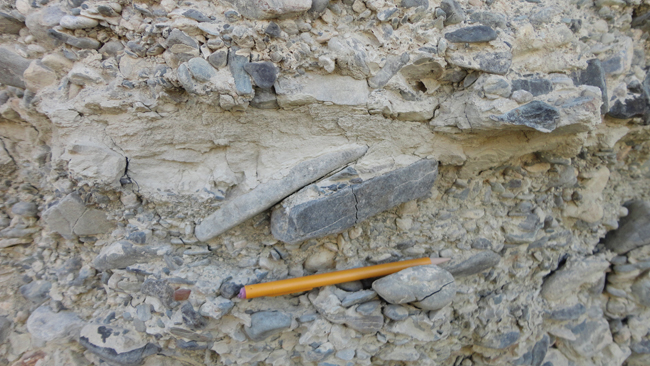
Annotated (black arrow shows current direction):
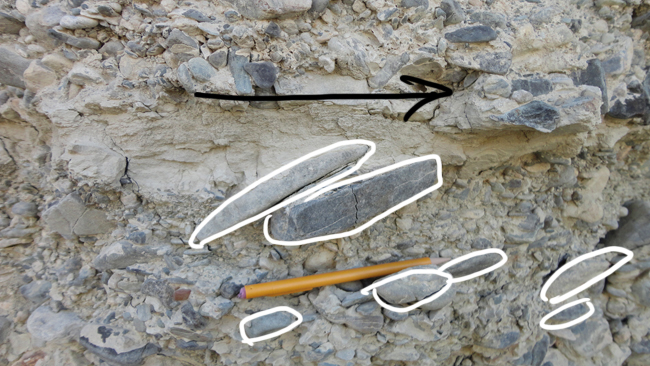
Turning around to face the opposite wall of the canyon cut into these semi-lithified deposits, you can see the same stuff, and (even though we’re now facing north), the current indicators still suggest flow was towards the west.
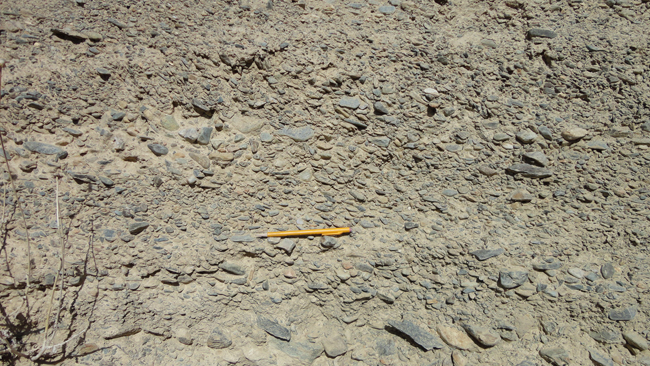
Annotated (black arrows show current direction):
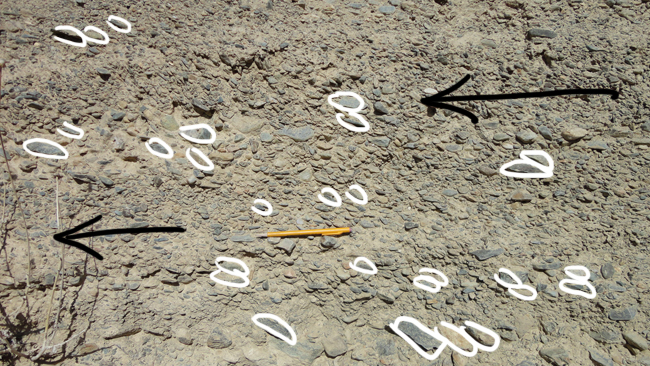
The Waucobi lake beds (including a 2.3 Ma volcanic ash layer) tilt at 7° to the west, an indication of how much tectonic tilting the area has experienced in relatively recent geologic time. These gravels appeared to have a similar tilt, though that may be partly depositional, given their coarseness. Though I wouldn’t use them as a “paleo-horizontal” indicator, and thus a strain marker, I wouldn’t be surprised at all to discover that they were deposited where high-gradient mountain streams slowed down and deposited their bedload as they entered pluvial Lake Waucobi.
Guess who took a photo of these same rocks back in 1897? My man Walcott, of course. (Note that the USGS has mis-identified the area as being in the Sierra Nevada rather than the White-Inyo Range.)
